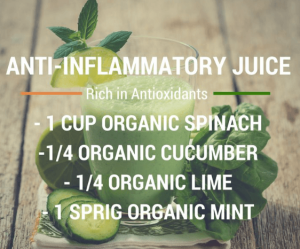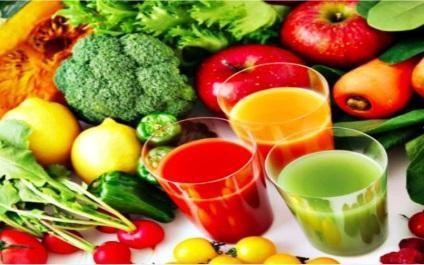
Although the general population has the best intentions with juicing and really do want to improve their health, they are juicing completely wrong – and what they include in their juices actually hinders their performance and balloons their waistline.
But why?
The main problem is that people include far too much fruit in their juices. For example, one extremely popular juicing recipe includes “Cucumber, Kale, Lemons, Apples, and Carrots”. This recipe starts out great, but then slides downhill fast because of the inclusion (and most likely main component) of apples and carrots.
As you juice fruit, you’ve stripped away the fiber and concentrated the sugars from many, many servings of fruit into a single serving of juice. Just try and see how many apples it takes to make just a tiny fraction of apple juice.
It’s a scientific fact that the digestion of liquids (like juice) occurs significantly more quickly than digestion of solid foods. This means that all that fructose sugar you’re putting into one place and consuming in a short period of time is being digested and absorbed far more quickly than if you had eaten its solid, fiber-filled counterpart (e.g. chomped on an apple or a carrot).
Guess what that means?
Your blood fructose levels can spike quite intensely and quickly, and there is some pretty significant difference between a fructose-spike and a glucose-spike, specifically:
- -After eating fructose, 100 percent of the metabolic burden rests on your liver. But with glucose, your liver has to break down only 20 percent.
- -Every cell in your body, including your brain, utilises glucose. Therefore, much of it is “burned up” immediately after you consume it. In contrast, fructose is turned into free fatty acids (FFAs), VLDL (the small, easy-oxidized and artery damaging form of cholesterol), and triglycerides, which mostly get stored as fat.
- -The fatty acids created during fructose metabolism can accumulate as fat droplets in your liver and skeletal muscle tissues, eventually causing insulin resistance and non-alcoholic fatty liver disease. Insulin resistance can then progress to metabolic syndrome and type II diabetes.
- -Fructose is the most lipophilic of the carbohydrates. In other words, fructose converts to an activated form glycerol called glycerol-3-phosphate, and this is directly used to turn free fatty acids into triglycerides. The more of this form of glycerol you have, the more fat you store (glucose does not do this).
- -If you eat 120 calories of glucose, about less than one calorie of that is stored as fat. But 120 calories of fructose results in 40 calories being stored as fat. So eating high amounts of fructose is essentially the same as consuming fat!
- -The metabolism of fructose by your liver can create a big list of waste products and toxins, including a large amount of uric acid, which drives up blood pressure and causes gout.
- -Glucose suppresses the hunger hormone ghrelin and stimulates leptin, which then suppresses your appetite. But fructose has no effect on ghrelin and interferes with your brain’s communication with leptin, resulting in overeating.
- -Fructose goes primarily toward replacing liver glycogen, not muscle glycogen. So – unless you happen to be at a huge calorie deficit (in which case your liver may actually get some glycogen storage from fruit juice) instead of replenishing the energy stores in your muscles, you are efficiently preparing your body to store body fat – which is of course the polar opposite of what most people are trying to accomplish when juicing.

So because of all this, about the only time you should have a sweet, sugary juice would be after a weight training workout, post-workout, or in a fasted state without a lot of other added foods (e.g. for breakfast). Any other time of day, a juice comprised of fruit spells fat.
And those are the “obesity traps”
Performance Drains
Another huge problem athletes and exercise enthusiasts face with juicing is that the recipes they use are not optimised for performance. Let’s look at this on two specific levels:
- The recipes do not have enough emphasis on vegetables and alkalinity. As an athlete or frequent exerciser, you put yourself through long bouts of intense exercise quite often. As you exercise, lactic acid, pyruvate acid, and CO2 build up as the use of muscle glycogen for energy increases. As your muscles become acidic, and hydrogen ions in your muscles accumulate from the buffering of these metabolic byproducts, fatigue sets in. This is a major problem for you as you go through intense training sessions or during a long competition, because this increased acidity can decrease the amount of time you can exercise, decrease exercise intensity, and lengthen workout recovery time.Maintaining metabolic alkalinity has been proven to decrease overall net muscle acidity, allowing athletes to address these issues. The problem is that common juicing practitioners do not pay attention to the ingredients, and do not create alkalizing recipes. Most of the common juicing fruits discussed earlier do not actually create alkalinity in your body. So, the only fruits that should really be juiced as a staple are lemons and limes, as they are some of the most alkalizing foods that exist.
- Almost all juices do not include any protein or fatsThis is another big performance drain for athletes. A diet lacking in protein causes lean muscle tissue breakdown during exercise and low levels of blood amino acids during exercise, which leads to muscle fatigue, central nervous system fatigue, metabolic slowdown, fat tissue accumulation, decreased performance and lengthened recovery time. All of these issues are quite common (even with non-athletes), and the caloric deficits from most juicing diets lead to weight loss, but a “skinny-fat” look due to the low amounts of protein and fat. Science has shown that in the general population, and especially athletes and exercise enthusiasts, a steady consumption of protein broken into small portions throughout the day is necessary for lean muscle maintenance, appetite satiation and long-term health.Most “normal” juices also often lack any healthy fats, another key macronutrient for sustained energy, hormone precursors, cell membranes and both gut and joint integrity. Fat is what allows your body to transport vitamins A, D, E and K – all key fat-soluble vitamins necessary for cell membrane formation, steroid and hormone building, bone health and nervous system activity. These same fat soluble vitamins also assist with key metabolic functions, including the regulation of blood pressure and heart rate.
But that’s not all.
Fat also provides you with concentrated, steady, slow-release forms of energy (1 gram of fat equates to 9 calories of energy, which is double that of carbohydrates or proteins). In addition, many essential fatty acids – such as omega 3 fatty acids – have to be consumed within our diet, since they are not naturally produced by our bodies. So, a diet lacking in healthy fats leads to decreased mental clarity, unsustainable energy and decreased formation of steroids, hormones and healthy cell membranes, all things that are absolutely imperative for an athlete’s success or for you to get the most out of your workout.
And sure, fructose can get converted into fat by your liver, but that’s not a healthy way to make fats.

How To Juice The Right Way
(However, not all juicing is bad)
When used properly and tailored for performance, juicing does actually have the potential to greatly improve an athlete or exercise enthusiast’s health and performance. It can indeed create an alkalized environment in your body and generate reliable, slow-release sources of energy – but only when done properly.
So here are my top three tips for juicing properly and avoiding the mistakes you just learned about:
- Add fats to your juice recipes for healthy and long-lasting energy. A one-ounce serving of chia seeds provides the body with 5 grams of Omega 3-fatty acids. It also helps with brain health, improving mental clarity and focus. Chia seeds also provide the body with a lot of anti-oxidants, protecting you from the free radicals generated during exercise. Other examples of fats that you can add to your juice include olive oil, liquid EPA oil, MCT oil, coconut oil, cod liver oil, and even butter or ghee!
- Include compounds that improve athletic performance. Do to the high nitrate content, beet juice can lead to significant improvements in performance. A study conducted at the University of Exerter’s School of Sports and Health Sciences measure the effects of beet juice on cycling endurance. In this study, a group of cyclists drank 500mL of beet juice for 6 days, while a control group was given a liquid containing almost no nitrates. The beet juice group was able to pedal for a full 16% longer than the control group and had significantly lower resting blood pressure after the consumption of the beet juice. In the realm of athletic competition, an improvement of 16% is quite impressive. Other examples of performance-enhancing compounds you can add to your juice include sea salt, powdered electrolytes, or marine phytoplankton.
- Add proteins to your juice. An ideal juice doesn’t just contain alkalinizing compounds, healthy fats, and athletic performance-enhancing compounds, but also sources of proteins or amino acids that are easily digested. You can’t necessarily shove a steak into a juicer but you can certainly stir in powdered amino acids or hydrolyzed collagen into your juice. You can buy the latter at ‘My Protein’, ‘Doctor’s best’ and ‘Holland and Barrett’.



